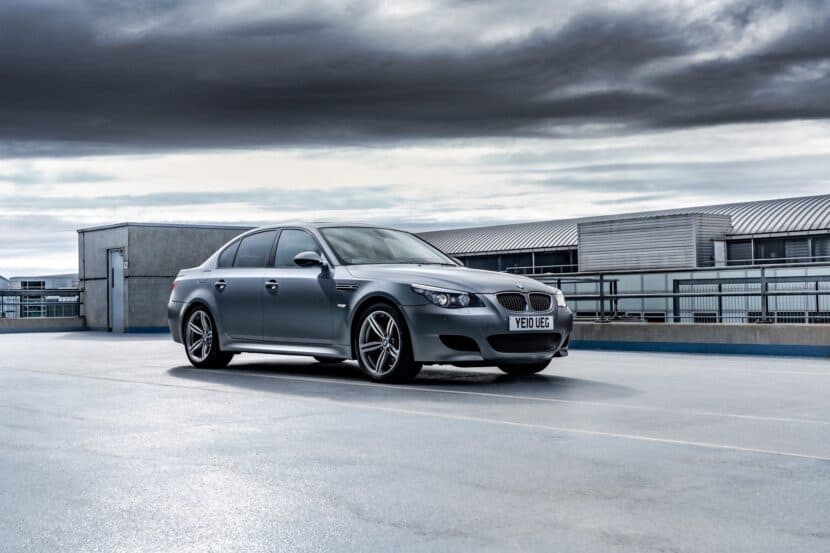As part of the upcoming 2013 Innovation Days, BMW releases more details on the i3 electric vehicle, its battery technology and charging solutions.
The power supply for the BMW i3 is provided by a specially developed high-performance lithium ion battery with eight modules and 96 cells, which is integrated compactly into the subfloor, where it is optimally protected. The battery was optimised continually in the course of development in order to optimally balance performance, range, weight and durability. The storage cells last as long as the entire life of a vehicle. When fully charged, the BMW i3 can travel up to 160 kilometres under everyday conditions before needing to be reconnected to a power source. The BMW i3 is used primarily in cities and as a commuter vehicle between work and home, but is also suitable for rural areas, as our MINI E trials have shown. And after evaluating over 20 million kilometres driven by over 1,000 test customers with MINI E and BMW ActiveE in ten countries, a clear picture emerges: around 90 per cent of daily journeys are around 45 kilometres on average, so a fully charged BMW i3 meets the everyday needs of its uses in urban areas to the maximum extent possible. While greater distances can be driven electrically with larger batteries, this currently entails extra weight, higher costs and reduced driving dynamics.
Charging: conveniently at home, at work or on the road.
In practice, charging the BMW i3 is extremely easy, and even today, many people can use electromobility comfortably on a daily basis. This is because at a home charging station – whether a standard electrical socket or the BMW i wallbox – the BMW i3 battery is completely full after a minimum of six hours, and with a modern public quick-charging device 80 per cent of the battery is charged after 30 minutes. In the time it takes to have a spot of lunch or do some shopping in the city centre, the battery can be recharged for a further 120 kilometres.
360° ELECTRIC.
To facilitate optimal use of the BMW i3, BMW i provides a comprehensive range of products and services that covers the individual needs of customers beyond the vehicle. With the full 360° ELECTRIC package, the advantages of electromobiilty can be experienced very reliably, comfortably and flexibly on a daily basis. Customers choose the products and services they want themselves. The 360° ELECTRIC portfolio is based on four main pillars: Charging at home, Charging at public charging stations, Securing mobility and Integration into innovative mobility concepts for overcoming range restrictions.
Home charging: convenient charging at home.
For customers with their own garage or private parking space, BMW i offers tailored solutions for charging at home safely, comfortably and very quickly. BMW i concluded a far-reaching partnership with Schneider Electric and The Mobility House (TMH) for this purpose in January 2013. The aim of this cooperation is to offer customer-friendly and efficient charging options that permit easy charging in your own garage when the BMW i3 is launched on the market. The agreement encompasses services such as testing of the residential installation at customers’ homes, delivery and assembly of the charging station (the BMW i wallbox), and maintenance, consulting and other services.
BMW i also supports the use of electricity from renewable sources and offers different green electricity products in cooperation with selected partners. As part of a strategic cooperation between BMW AG and Naturstrom AG, in future customers in Germany will have the option of purchasing an eco-electricity package for running their BMW i3. As Naturstrom AG supplies all of its electricity from renewable energy sources, including a very high percentage from wind power, CO2-free operation of the electric vehicle is guaranteed. And BMW i is also helpful if customers opt for a carport with solar panels, for example.
Outlook: inductive charging.
While charging with a charging cable and wallbox has now developed to become a standard series feature, the BMW Group is already working on possible additional options for the future. One example is inductive charging, which works without cables or electrical sockets. With this technology, the electrically powered vehicle drives onto a charging plate on the ground, and power is transferred without contact via an electromagnetic field. Such a solution is theoretically possible for home garages, but could also eventually be made available in public areas – such as plates embedded in the ground on roads and public car parks.
When development of the BMW i3 began, the available vehicle-side charging units were too big and heavy, and would have reduced the range of the vehicles unnecessarily. However the researchers in the BMW Group have now succeeded in reducing the size and weight of the charging plate integrated into the vehicle by a factor of ten. Much smaller systems that are highly efficient and safe are now feasible through the use of ultramodern resonator technology. In order for inductive charging technology to be compatible with vehicles from different manufacturers, an – ideally international – standard is needed. The BMW Group has founded an official workgroup for this purpose with other German manufacturers under the auspices of the German Commission for Electrical, Electronic & Information Technologies (DKE/VDE), and various manufacturers are in communication at an international level.
Public charging: charging on the go.
Users who cannot charge their BMW i3 at home or at work will also find custom solutions at 360° ELECTRIC. In cooperation with car park operators and providers of public charging stations, BMW i offers customers reliable access to the public charging infrastructure. Together with its partners, BMW i supports interconnection with smartphones and navigation systems to provide users with convenient features such as displaying available charging stations and simple, transparent payment methods with the ChargeNow card. The ChargeNow card permits comprehensive access to charging stations and cashless payment. The ChargeNow card bundles the maximum possible number of public charging infrastructure providers in all BMW i markets, so that customers can access the charging stations of different providers with just one card and receive one standardised bill from BMW i.
In Germany alone there are over 70 different providers of public charging facilities currently using different payment and service concepts. Harmonisation of this situation is essential. The ChargeNow card is the proprietary BMW i product providing customers with an intelligent solution. The challenge is to continue further expanding the comprehensive products and services together with all participating partners.
A current example of the interconnection of the public charging infrastructure is the recently presented solution portfolio of Hubject GmbH, a joint venture of the BMW Group, Bosch, Daimler, EnBW, RWE and Siemens. The company enables providers of electromobility services to expand their offering to include e-roaming. With just one provider agreement, drivers of electric vehicles have access to each public charging point in an existing European network – which BMW i customers can use with the ChargeNow card. This will make charging electric vehicles as easy as withdrawing money from a cash machine in future. Access to the charging station occurs via a standardised QR code, which starts and ends the charging process by scan function and smartphone app.
An imminent reality: from Munich to Leipzig by electric vehicle alone.
In a German government-funded joint venture of the BMW Group with ABB, Deutsche Bahn, EIGHT, RWE, the University of Bamberg, the University of the German Armed Forces Munich and Dresden University of Technology, a quick-charging station for electric vehicles is being erected at BMW World in Munich, which will be ready by the summer. It offers users two charging points in the Combined Charging System CCS (Combo), which the European automobile manufacturers have agreed upon as a common standard. In addition to the known charging method using alternating current, CCS permits ultrafast charging with direct current and is suitable for the new BMW i3 as well as electric vehicles from other manufacturers.
The new charging station creates an intersection between electric vehicles, local public transport and electric bicycle traffic in the immediate vicinity of Olympiapark underground train station.
As part of another promotional project, a consortium consisting of the BMW Group, Siemens and E.ON is installing quick-charging stations along the A9. From the start of 2014 this will enable 100% electrically powered travel from Munich to Berlin – interspersed with short charging stops. And it will not end there: a similar plan by other companies will bridge the distances from Munich to Salzburg and Vienna and further on to Bratislava – paving the way for a transnational network of quick-charging stations.
These examples show that the publically accessible charging infrastructure is growing continually and the charging options at home or work currently still in predominant use are continually being improved, giving users of electric vehicles even greater flexibility and the option of travelling even longer distances without difficulty. The large-scale field trial by the BMW Group also produced interesting results here: users who had their own and secured public charging facilities were able to make up to 90 per cent of their journeys with the MINI E, and achieved this with less than 10 per cent public charging on average.
Flexible mobility: adept use of alternatives.
Where the range of a BMW i3 is insufficient, customers can avail of supplementary mobility modules, which can be used to handle even greater distances – the temporary use of a BMW with a combustion engine or hybrid engine, for example. Individual annual quotas can be added using 360° ELECTRIC for this purpose. BMW i customers also have access to the DriveNow car-sharing service.
The focus with the BMW i3 is on the 100% electrically powered option. For customers who regularly want to drive distances exceeding 160 kilometres, however, we offer an optional range extender that increases the range of the BMW i3 to around 300 kilometres.
Assistance services.
In order for the BMW i3 to always function reliably in daily use, the battery and other electric systems are continually monitored while driving. In the rare event of a fault, the BMW Service Mobiles or workshops are able to identify defective components through diagnosis.
However, if the battery is actually damaged, BMW i offers a fully modular and reparable high-voltage battery for the first time in the automotive industry with the introduction of the BMW i3. Any defect does not therefore necessarily require a full replacement, as it may be possible to correct the problem by replacing individual modules at selected BMW i dealers. The design measures and replacement part approach contribute significantly to long-term product acceptance, economical operating costs and reduced warranty costs. This concept also therefore contributes very significantly to the conservation of resources and the sustainability strategy.
BMW developed the battery itself.
The high-voltage batteries for the BMW i3 are manufactured on an ultramodern assembly line in the BMW works in Dingolfing. Apart from the cells, which are bought from a supplier, the batteries are a proprietary development of BMW. This made it possible to build on development experiences from previous batteries developed in-house, such as the BMW ActiveHybrid 3 and 5 and the BMW ActiveE, and make further optimisations.
The modular structure of the battery comprises individual blocks which each have their own safety systems. The decision to build the energy store itself does more than just secure the future for the site in Germany. It also offers BMW and its customers many advantages. It guarantees that the potentials of the power storage technology are further exploited, while also guaranteeing typical BMW performance and maximum safety. And as developer and manufacturer, BMW can respond very flexibly to future requirements and needs.
Battery lasts the life of a vehicle.
The lifespan of a lithium ion battery depends on different factors. Two effects cause it to age: firstly, calendrical, i.e. performance and storage ability decline with advancing age; this effect is highly dependent on the temperature of the battery. Secondly, charging and discharging affect the ageing behaviour. Exhaustive tests by developers have shown that the cells as used in the BMW i3 meet the strict BMW requirements regarding both lifespan and cycle stability for the entire life of the vehicle. This is achieved using a suitable selection of chemical components in the cells and intelligent battery management, which operates the storage device in the optimal usage range (e.g. adjustment of temperature by cooling or heating).
Cooling with refrigerants.
BMW i uses the air-conditioning system’s refrigerant to cool the high-voltage battery directly. This coolant offers maximum refrigerating efficiency in comparison to water or air-cooling and no additional components such as fans or pumps are needed, reducing weight and installation space. The heat for preconditioning in cold temperatures is powered directly from the electricity network, if the vehicle is connected to the wallbox.
As a result, battery output is maintained evenly throughout most of the charging status and is generally independent of fluctuating temperatures, benefitting the suitability for daily use, long-term stability and lifespan of the battery.
In addition, particular importance was attached to low power consumption by the electrical consumers in the BMW i3. The passenger compartment heating system operates on the heat pump principle and saves up to 30 per cent electricity in urban traffic compared to conventional electric heating. Electricity-saving, light-emitting diodes are used for interior and exterior lighting. Both of these measures contribute substantially to the range of the BMW i3. And with the first ever use of laser light, the BMW i8 breaks into a whole new energy efficiency league.
Reliability is key.
The introduction of new technologies is always associated with caveats. However, when the BMW i3 is launched this year, drivers, passengers and other road users can rely on a completely safe vehicle that meets the high BMW Group standard. It exceeds statutory requirements in all safety-related areas.
Unlike a conventional on-board network, the electrical system of the BMW i3 has a bipolar design. Therefore the minus pole is not attached to an earth, i.e. the car body, but instead is wired as a separate, fully insulated line. A completely sealed battery housing also keeps all water out. Naturally, the suitability of the cells for automotive use was considered in addition to efficiency and durability, particularly with regard to safety, when selecting the chemical composition of the battery cells.
In addition, complex monitoring algorithms, sophisticated sensors and the cooling system described above ensure that the battery cannot be overcharged or excessively depleted and does not overheat in operation. Three safety levels including both software and hardware deactivation mechanisms secure the entire electrical system reliably.
Sustainability: repurposing after the life of the vehicle.
The battery of the BMW i3 is still highly efficient with good energy storage capability at the end of the vehicle’s lifespan. After around 1,000 charging cycles, the battery retains most of its rated capacity. BMW i will therefore prepare the batteries and repurpose them. From a sustainability perspective, the batteries can be used as stationary energy storage devices for numerous new applications.
These include interim storage of solar energy in a solar power system for feeding electricity back into the home network during the night or poor weather or to recharge a BMW i3 – making it possible to power a BMW i using self-produced green electricity.
Connecting multiple batteries together also offers the possibility of storage systems on commercial scales. The two research centres of the BMW Group already use these systems: the BMW Group Technology Office USA in Mountain View, California, and since January 2013, the BMW ConnectedDrive Lab in Shanghai, China. MINI E batteries are also used in the Energy Efficiency House Plus of the German Ministry of Economy and Technology in Berlin to optimise and stabilise the local power supply.
Other commercial usage scenarios for large storage devices with several megawatts of storage capacity include supply stabilisation at electricity network level. BMW i is working on researching and implementing applications on this scale. As a global automobile manufacturer, BMW i pursues an integral strategy for covering the potential world markets in the area of repurposing batteries.








































































